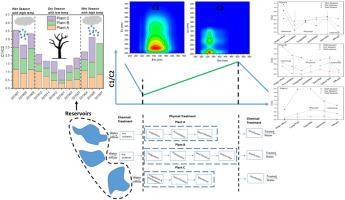Water Research ( IF 11.4 ) Pub Date : 2020-07-01 , DOI: 10.1016/j.watres.2020.116125 Tahir Maqbool 1 , Yanling Qin 1 , Quang Viet Ly 2 , Jiaxing Zhang 1 , Chengyue Li 1 , Muhammad Bilal Asif 1 , Zhenghua Zhang 1

|
This study aims to extend and demonstrate the application of fluorescence spectroscopy for monitoring the water quality of three differently operated full-scale drinking water treatment plants located in the Shenzhen city (China). A ratio of fluorescent dissolved organic matter (FDOM), which describes relative changes in humic-like to protein-like fluorescence, was used to explain mechanisms behind the physicochemical processes. The fluorescence components obtained through individual and combined parallel factor analysis (PARAFAC) modeling revealed the presence of humic-like (C1) and protein-like (C2) structures in the DOM. The C1/C2 ratio provided a direct relationship between the seasonal variations and DOM composition. Wet season generated DOM enriched with humic-like fluorescence, while dry season caused a higher release of protein-like fluorescence. The fluorescence ratio presented unique patterns of DOM in treatment trains. The chemical pretreatment and disinfection unit processes showed a higher tendency to remove the humic-like fluorescence. However, the C1/C2 ratio increased during physical treatment processes such as coagulation-precipitation and sand filtration, indicating preferential removal of protein-like fluorescence. The DOM composition in influent directly (R2 = 0.77) influenced the relative intensities of fluorescence components in the treated water. Compared to the dry season, the wet season caused significant changes in DOM composition and produced treated water enriched with humic-like fluorescence. This fluorescence ratio offers an approach to explore the role of different treatment units and determine the factors affecting the composition of DOM in the surface water and drinking water treatment plants.










































 京公网安备 11010802027423号
京公网安备 11010802027423号